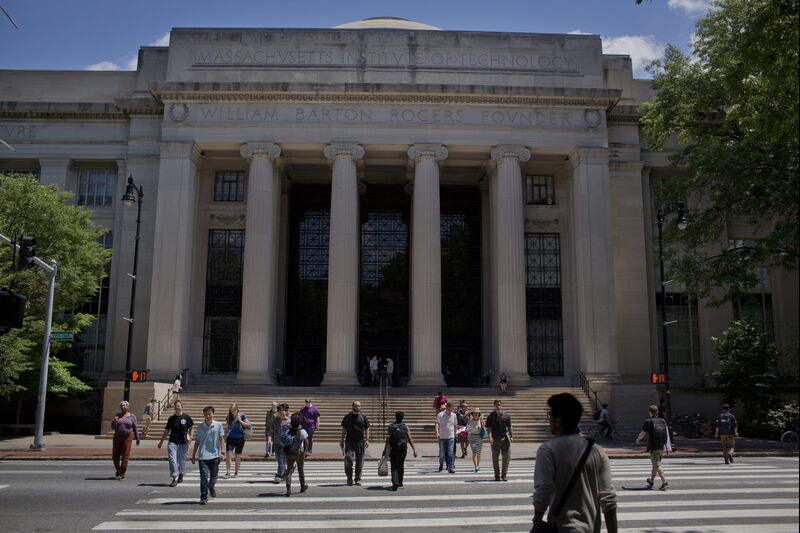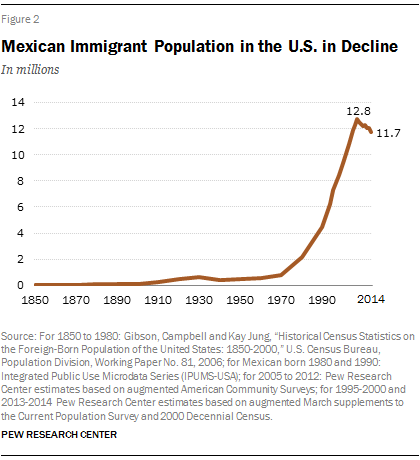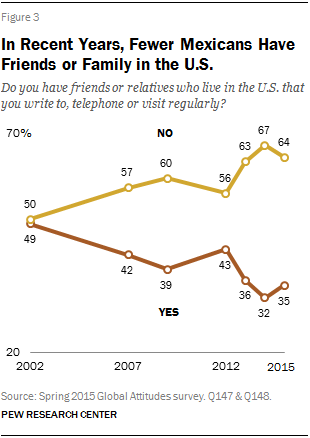My 10th time saying this...
Trump has turned you all in to his clones and this is the reasult
Its affecting every industry
Trump has turned you all in to his clones and this is the reasult
Its affecting every industry
Bloomberg - Are you a robot?
Foreign Students Sour on America, Jeopardizing a $39 Billion Industry
They provide critical revenue to U.S. universities. But the administration’s immigration crackdown has them going elsewhere.
By
Nick Leiber
January 17, 2019, 4:00 AM EST
Mute
Current Time0:01
/
Duration Time2:00
Loaded: 0%
Progress: 0%
Getting Rid Of Student Debt
Getting Rid Of Student Debt
Share
Tweet
Post
In this article
3840Z
UNIVERSITY OF TORONTO
Private Company
MCO
MOODY'S CORP
162.77
USD
+2.10+1.31%
XW1
Generic 1st 'XW' Future
98.30
USD/MT
+0.10+0.10%
Last May, Luis Carlos Soldevilla graduated with one of the best grade point averages in his Mexico City high school. For his senior project, he even tackled Goldbach’s conjecture, a famous number theory problem. Soldevilla considered attending Boston University and the University of Washington, both of which had accepted him. He also had fond memories of the University of California, Berkeley, where during the summer of 2016 he took a computer science course.
But instead of enrolling at a U.S. school, Soldevilla started this fall at the University of Toronto, Mississauga, where he’s pursuing a double major in computer science and mathematics. Why did he pick the Canadian school over those big American names?
“A very important factor of my decision was that there was no Trump,” the 19-year-old said.
New foreign student enrollment in the U.S. dropped by 6.6 percent in the 2017-18 academic year, double the previous year’s rate of decline, according to the Institute of International Education (IIE). While the total number of international students in the U.S. grew slightly, the drop in new enrollees is the biggest since 9/11, said Rachel Banks, public policy director at NAFSA: Association of International Educators. The decline seems to be continuing this year, she said.

The University of Toronto, Mississauga campus.
Photographer: Adiseshan Shankar/Alamy Stock Photo
The report attributed the drop to multiple factors, including visa delays and denials, the “social and political” environment and the cost of attending a U.S. school. The administration’s hard-right immigration policies, such as banning people from Muslim-majority countries and separating children from their parents at the border, make prospective students and their parents feel “that we’re not a welcoming country,” Banks said.
The number of F-1 visas, the kind issued to foreign students going to school full-time in the U.S., dropped from about 644,000 in fiscal 2015 to about 394,000 in fiscal 2017, according to data from the U.S. State Department. Vanessa Andrade, associate director of international partnerships and program development at California State University, Northridge, said safety is always the biggest concern.
Worries range from gun-fueled massacres to violent white supremacist groups, which have been resurgent since President Donald Trump took office, according to the Southern Poverty Law Center. Foreign enrollment at Northridge was down 16 percent in the 2017-18 academic year, according to IIE data.
blog post in 2017. “When we provide a service that leads to foreigners sending money into the U.S., that’s an export with exactly the same economic effects as when we sell soybeans or coal abroad.”
In a small place with a large international student population, you see the economic impact almost immediately, said Jennifer Ewald, associate vice provost for global strategy at Fairfield University in Connecticut. “You might not notice in New York City, but you will notice in a town like ours,” she said. “I don’t think people outside of higher ed understand the threat to local economies.”
As state and federal dollars dried up, schools used tuition from international students to make up the shortfall. With U.S. high school graduation rates flat or falling, international enrollment helped boost revenue “due to limited tuition discounting,” Moody’s Investor Service wrote in a 2017 report in which it downgraded its credit outlook for the U.S. higher education sector from stable to negative, where it remains today. In December, Moody’s said more stringent immigration policies were playing a role in falling international enrollment.

The Massachusetts Institute of Technology campus in Cambridge, Massachusetts.
Photographer: Victor J. Blue
Immigration lawyer Dana Bucin, a Hartford, Connecticut-based partner at Murtha Cullina, has advised hundreds of foreign students at schools including the University of Connecticut, the Massachusetts Institute of Technology and Yale University. She said colleges are worried their pipeline of highly-talented internationals will shrink.
The students are “being stressed out of their minds, not because they’re planning on breaking law, but precisely because they’re trying to comply with it,” Bucin said. “They feel they’re here to contribute, not to steal anything away.”
And contribute they do. Graduate education in critical areas such as science and engineering, where America is increasingly falling behind other countries, couldn’t function without foreign students, warns a 2017 report by the National Foundation for American Policy. “At approximately 90 percent of U.S. universities, the majority of full-time graduate students (master’s and Ph.D.s) in computer science and electrical engineering are international students,” it said.
Because there aren’t enough homegrown students enrolled in these kinds of programs, internationals who are should automatically be given green cards, said Fariborz Ghadar, the director of the Center for Global Business Studies at Penn State University. The university’s international student body dropped about 5 percent from 9,134 in the 2016-17 academic year to 8,636 at its largest campus, University Park, in the last academic year.

Penn State University’s main campus, in State College, Pennsylvania.
Photographer: Gene J. Puskar/AP Photo
“If you oppose immigration, you can say, ‘Well, we’ll enroll some more Americans to offset the decline,’” said Ghadar. “But we’re already letting in all the native-born Americans who are qualified.”
A handful of universities, including Haverford College and the New School in New York, sued the Trump administration in October over an immigration rule change that took effect in August. It altered how a concept known as “unlawful presence” is enforced, making it easier to ban foreign students for 3-year or 10-year periods if they are found to have violated the terms of their admission.
Such terms include not working more than 20 hours per week at a campus job, forgetting to notify school officials after moving to another dormitory, or even if a school official makes a mistake with the paperwork.
Plaintiffs contend the change is illegally “designed to impose tens of thousands of reentry bars” annually, and that it violates federal immigration and administrative procedure laws. They warn it will result in the “banishment of untold numbers of international students and exchange visitors acting in good faith.” Last month, additional plaintiffs including the American Federation of Teachers joined the suit, filed in federal court in Greensboro, North Carolina. More than 60 colleges and universities filed an amicus brief in support of the litigation.
Canada’s hit 20 percent, according to NAFSA.
At the University of Toronto, the number of foreign undergraduates such as Soldevilla climbed 14.8 percent, from 4,023 in 2016 to 4,620 in 2018. Applications increased about 20 percent for each of the past two years, said Ted Sargent, the school’s vice president of international. “Many are looking not just for a place to come to school but potentially to settle in the long run,” he says.
That’s a key consideration for Istanbul-born Alara Demirag, an architecture student at the University of Toronto. The 20-year-old was accepted into four U.S. universities, each of which awarded her scholarships. Studying in Canada was appealing, in part because it was easier to stay and work after graduating—and for her parents to join her. She said that some of her Turkish friends accepted by U.S. schools were denied student visas, including one who got into Berkeley and “was devastated.”
For decades, “the U.S. has had the first pick in choosing the best minds from around the world,” said Angel Cabrera, president of George Mason University in Fairfax, Virginia. “It isn’t widely understood, but it’s a huge economic advantage that would be very dangerous to risk losing.”








